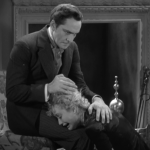 |
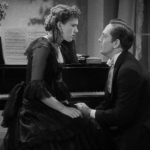 |
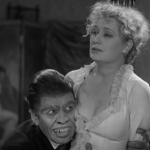 |
| Jekyll / Hyde Fredric March |
Muriel Rose Hobart |
Ivy Miriam Hopkins |
| Released by Paramount Pictures | Directed By Rouben Mamoulian |
||
Proof That It’s Pre-Code
- Men need to control their passions, lest they let their dark side run rampant and turn into horrifying monsters who sexually abuse and murder women. Sound good?
- Oh, and this film’s scenes of Miriam Hopkins undressing and waving her tantalizing leg are legendary, and for good reason.
Dr. Jekyll and Mr. Hyde: Two Faced
You are Dr. Henry Jekyll. Cocksure, a hero in your field, and a man whose lectures are attended by hordes of eager students. With the rapture of a revival preacher, you’re completely convinced of your ideals: “It’s unscientific not to admit the possibility of anything!”
Your hypothesis? There are two beings within every human: the good part, and the dark, creeping half. With science, this dark part can be exorcised, and man can become pure and good. The darkness will wither and die on its own.
That also figures into your fatal character flaw: you, sir, are really, really horny.
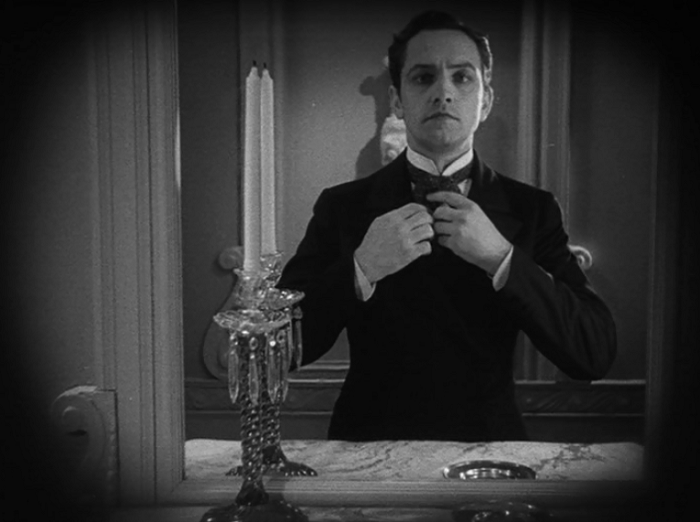
Okay, let’s dial back from the second person narrative before we get into your sadomasochistic impulses and rampant egomania (don’t feign ignorance, I know you too well for that). 1932’s Dr. Jekyll and Mr. Hyde cashes in on two popular trends of the time: Freudian psychology and Dracula-inspired horror trappings. The film’s director, Rouben Mamoulian, does these concepts one better by adding an inspired layer of first-person visuals. He implicates the viewer in each of Mr. Hyde’s increasingly depraved acts, a dark ride where no one leaves with clean hands.
As mentioned above, Henry Jekyll is a rock star scientist, consumed with his own ego. He works long hours in the clinic not out of charity, but as a way to further confirm his own godly delusions. This is to the frustration of Muriel Carew, his fiancée, and even more to the frustration of her father, Brigadier-General Carew. The general isn’t so concerned with Jekyll’s late hours and overt power fantasies but that Jekyll doesn’t have the decency to behave enough like a stuffy upper class gentleman. What no one seems to pick up on is that Jekyll is far more obsessed with being right and better than everyone than being in love; consummating his passion with Muriel is the only thing between him and standing atop Olympus.
The dismissal by Muriel’s father really gets to Jekyll since being old and stuffy just isn’t in his wheelhouse, man. The night after his request to bump up the wedding date is refuted once again, Jekyll’s horny thermometer is reaching dangerous temperatures. That’s when he comes upon Ivy, a cockney singing girl whose blonde locks and exhibitionist attitude demonstrate once again that it just isn’t going to be Jekyll’s upper lip that’s stiff.
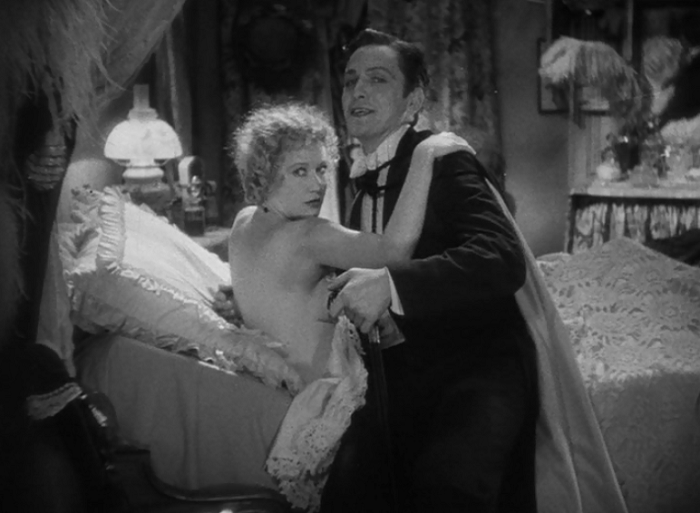
She’s been injured in a fight with a customer— er, boyfriend— and Jekyll agrees to take her back up to her room and examine her bruises. Rather delighted that a man of stature has taken an interest in her, she flirts mercilessly and undresses for further examination. She teasingly tells Jekyll to turn eyes because he’s a gentleman— but he clearly doesn’t. The audience doesn’t get to journey along with Jekyll as he gets an eyeful of all of Ivy’s delicate curves, but, like so many things in life, the implication is much more alluring.
If not for the intervention of his friend and confidant, Dr. Lanyon, Jekyll’s Victorian impulses may have been lost in the chaos. Learning that Muriel still won’t be his for months and is going on a long sea voyage to boot, Jekyll finally snaps. If he can’t make it with a woman, he’ll just have to make it with science.
The brew that he’s been discussing that frees the beast that lurks in the hearts of men does so admirably. The transformation from Jekyll into Hyde contains some of the most impressive “How’d they do that?” special effects of their time, with some work that still looks seamless and impressive today. Crooked, hairy prosthetics turn handsome Fredric March into a half man, half ape with sharp protruding fangs and a brow sourced from times long passed.
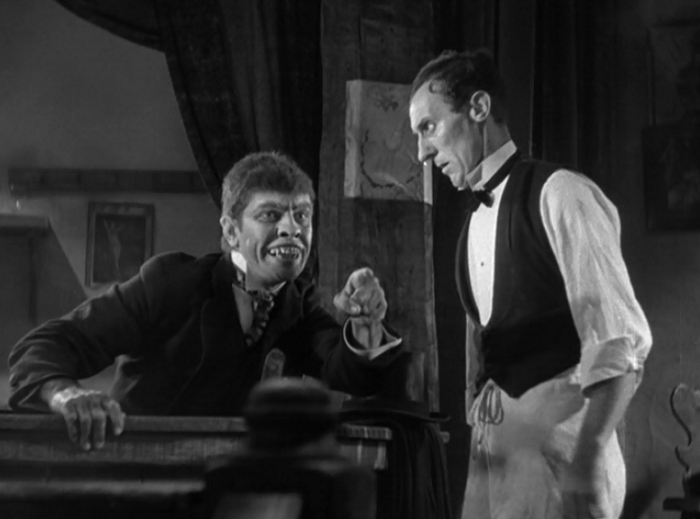
This is Mr. Hyde. You may have heard of him. Besides the simian appearance, his attitudes follow the same path. In a bar full of ruffians, his scares them all into submission; he immediately makes it known that he is the alpha bully, and their job is to fall in line or get hurt. His body language is that of pure primordial aggression, slinking his arms and hissing at those who get in his way.
March really nails both halves of the equation, from Jekyll, who believes himself a holy man who can do no wrong, to Hyde, who cackles in glee listening to the woman he beats sob and beg him for more. He cackles to Ivy who he now keeps locked up in an apartment, “I hurt you because I love you. I want you. What I want, I get.” Freud writ large indeed.
Jekyll feels mild guilt when he returns to normal by way of his potion, but he still feels justified in this escapism until Muriel returns. He’s such a great man, didn’t he deserve to indulge in a bit of naughtiness in the mask of a savage for a fortnight? Unfortunately for him it turns out that the darkness doesn’t go away so easily; Jekyll’s transformations into Hyde start to become involuntary.
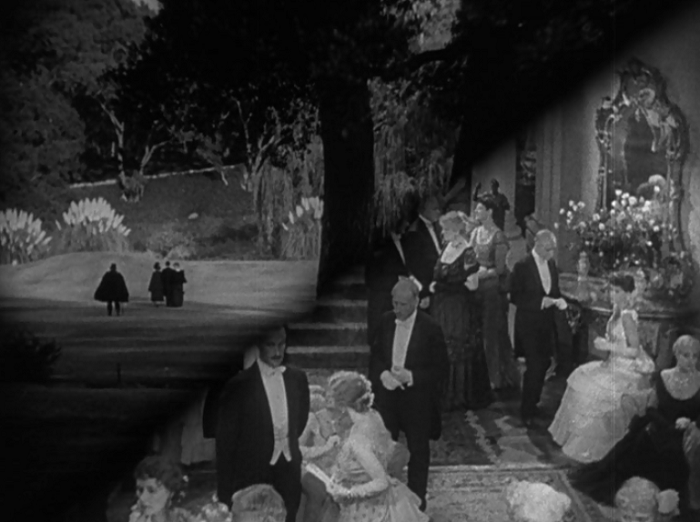
Jekyll and Hyde shows as much as a filmmaker could get away with showing back then, both in terms of violence and sexual content. It’s a product of the “pre-Code” era, a time where film censorship was present but not as heavily enforced as it would later become between 1934 and 1966. The film revels in Paramount’s European-flavored production design, with Mamoulian crafting one of the most atmospherically engaging visions of Victorian-era London put onto film. Taking plenty of cues from The Cabinet of Caligari and other surrealist tinted masterpieces, he makes use of wipes, extreme close-ups and shot composition to symbolize the inner torment these characters are stuck in.
The performances are uniformly excellent. Miriam Hopkins, most often recalled as Lubitsch’s preferred provocateur of the 30s, plays Ivy as a brazen bargirl who goes from fiercely independent to unenviable victim overnight. Her aching desperation endears the audience to a character who normally wouldn’t portrayed with an ounce of sympathy. Rose Hobart as Muriel is excellent as well, giving her longing and desire a palpable sense of eroticism, something needed to drive Jekyll just completely up the wall.
And the film wouldn’t work without Fredric March’s titular performance as the two men. March, who was usually seen as a Paramount, used his charm to both endear and repulse us from Jekyll. And, as Hyde, he’s nearly invisible as an actor. He brings a fascinating charisma to both, creating monsters out of men while still being endearing enough to straddle the line between repulsion and attraction. March won an Academy Award for his performance, a rarity for the horror genre but certainly a well-deserved one.
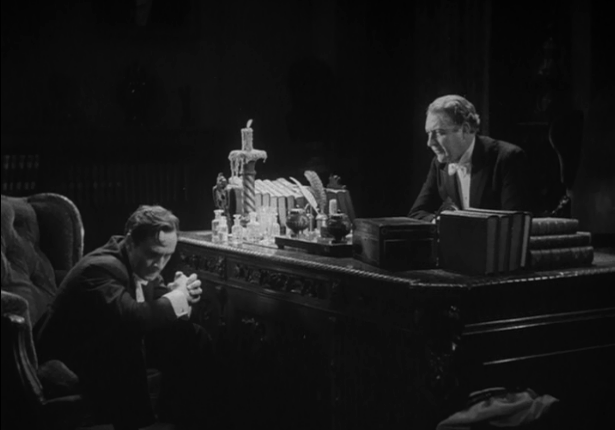
Dr. Jekyll and Mr. Hyde has held up well over the years since the original novel was published, and this screen adaptation remains the most visceral and sumptuous of the adaptations. The story can be interpreted in several different ways, from the deleterious effects of sexual frustration to how society condones depraved lunatics until they cross the line and in many more ways to be sure.
What’s important to remember isn’t how much of an unhinged psychopath Hyde is, but how much of that rampant entitlement comes directly from Jekyll’s character. Hyde isn’t so much a dark mirror as a slight skew—Jekyll is the genius of science, Hyde is the mastermind of depravity. In today’s world, where there’s the person you are online and off, it’s hardly a wonder that the story continues to resonate.
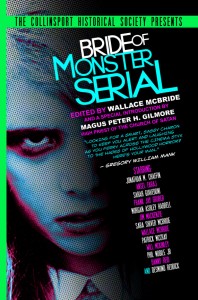 Bride of Monster Serial
Bride of Monster Serial
This piece originally appeared in Bride of Monster Serial, a collection of essays about beloved horror movies. Here’s the description:
BRIDE OF MONSTER SERIAL is the inevitable sequel to MONSTER SERIAL, a collection of essays published in 2013 by the award-winning COLLINSPORT HISTORICAL SOCIETY. The second book in the series continues the theme of exploring a love for horror cinema, focusing on both popular and obscure films. It’s an eclectic collection where movies like THE DEVIL’S RAIN sit comfortably alongside films like NIGHT OF THE HUNTER, THE FLY and THE TOXIC AVENGER.
Wallace McBride did a great job assembling the book, and you should definitely check it out!
Gallery
Hover over for controls.
Awards, Accolades & Availability
Comment below or join our email subscription list on the sidebar! |
||
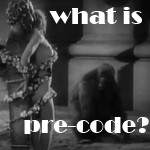 |
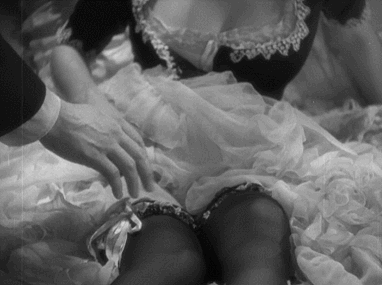 |
 |
 |
 |
|

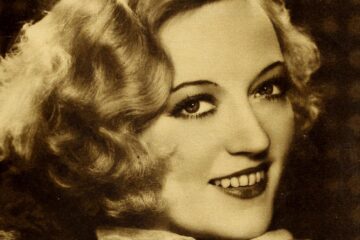
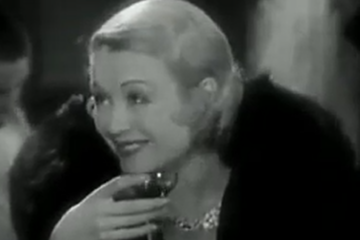
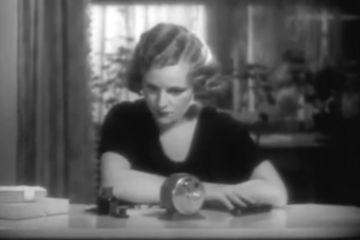
15 Comments
Jennifer · September 12, 2014 at 2:12 am
I was expecting the whole “proof that it’s pre-Code” section to just say “Miriam Hopkins”. 😀 I am not disappointed.
Have you ever seen the Barrymore 1920 version? If so, what did you think of it compared to this?
Danny · September 12, 2014 at 12:36 pm
I have! And while I think Barrymore gives a great performance and I do, indeed, find the human-sized tarantula pretty creepy, I’d put it below this one in every category.
DeniseW · September 12, 2014 at 4:44 am
Danny, I enjoy all your reviews so much, but I have to say this – it is “Fredric” March – no extra “e”. Thanks for reviewing a really wonderful film!
Danny · September 12, 2014 at 12:38 pm
Wow. I have apparently been making this mistake for years. Thank you!
Vanessa B (@callmeveebee) · September 12, 2014 at 5:45 am
Holy moly, what a fantastic write-up! After reading this, I have come to one conclusion: it’s been far too long since I’ve seen this movie! It’s airing tomorrow, right? On TCM? There we go – my Friday night is sorted!
Danny · September 12, 2014 at 12:39 pm
Yep, definitely showing up on TCM on Friday, and it’s one of my absolute favorites. It’s so stylish and so racy and so much damn fun that I find it irresistible.
Rick · September 14, 2014 at 8:21 am
Nice review, Danny! I love your description of Jekyll as a “a rock star scientist.” This is still probably the best adaptation of Stevenson’s work. March is terrific, though I wish that Hyde looked more human.
Danny · October 8, 2014 at 6:31 pm
Thanks for coming by Rick. I actually like how Hyde’s looks evolve over the film, starting out very primitive and ape-like before slowly looking more like a man– a man who is melting, but a man nonetheless.
Emily · September 14, 2014 at 9:29 am
I definitely prefer March’s Jekyll to Barrymore’s. Barrymore’s Jekyll was a saint; March’s is flawed and more human.
Danny · October 8, 2014 at 6:32 pm
It’s been a long while since I’ve seen Barrymore’s, so I can’t wholly comment. I will say the sequence of the giant spider sure stuck with me, though I can understand why Mammoulian ditched that sort of imagery and went with the more ape-like stuff instead.
Jbug · October 9, 2014 at 10:55 pm
Ever since the last time I rented the March version, I’ve been hoping this would be released on blu ray. WB, is releasing Dorian Gray on BD so hopefully DJ&MH will follow. The March version is the cream of the crop and a joy to watch. I think I read that March did his own stunts which if so were entrancing just as his acting is.
Danny · October 29, 2014 at 1:40 pm
I heard a rumor that the 31 Jekyll and Hyde may make it to blu-ray via Criterion. It may not happen, but a man can dream!
Walter L. · October 30, 2015 at 2:30 am
…I once saw this theatrically with MGM end title cards , I know that MGM bought this when they made their Spencer Tracy version but I tend to assume that such buy-ups were generally to suppress/keep out of release the original ~ I recall this having a 40sish MGM card/graphics at the end , as I said .
I recall this print having a brief MPAA rating card at the top , possibly ” G ” ! I do know that MGM did a ” nostalgia “-targeted theatrical re-release triple feature of this , a Karloff Fu Manchu , and Mark Of The Vampire?? in the early 70s , so that was not a suprise in itself .
I never saw it , but I’ve seen that an issue of CASTLE OF FRANKENSTEIN in the 60s had a piece about this film being rediscovered after being ” lost ” ~ In toto or just that only a censored version existed ?
I recall some slight difference between this print and other descriptions of it and I wrote about it at Imdb.com a long while back but I sort of forget what I wrote so I’d better check it again 🙂 !
Kevin Maher · November 22, 2016 at 6:08 am
WOW! Having just watched this for the first time that’s all i can say! March is fantastic, but this seals the deal that Miriam Hopkins is my new favorite actress. Just looking at 3 performances; Dr Jekyll, Temple Drake & Design for Loving proves there may be nothing she couldn’t do. She’s funny, sexy, smart, clever and the fear she engenders in both Jekyll & Temple Drake is palpable. I Love your site, by the way. I’m using it as my guidepost to work through the best of the pre-code era!! kudos.
srogouski · December 30, 2016 at 10:47 am
I found this movie profoundly disturbing, especially the scenes between Miriam Hopkins and Frederic March (as Mr. Hyde). Hyde is more than just the manifestation of Jekyll’s lust. He’s the manifestation of Jekyll’s contempt for the lower classes, of his sadism. The way Hyde speaks to Ivy isn’t about sex. It’s about the urge to degrade and control. Hyde is the bourgeois male stripped of his hypocrisy, but what’s underneath civilization isn’t really sex. It’s the will to power.
Comments are closed.